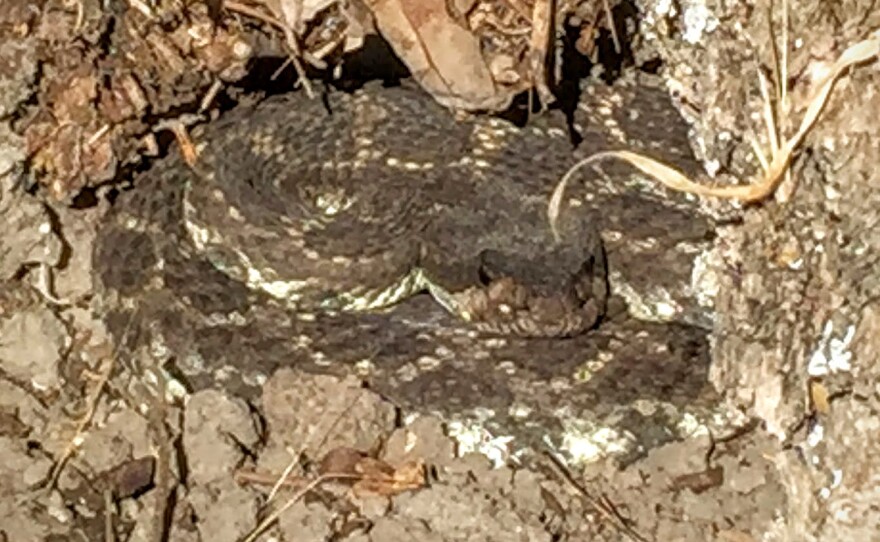Rattlesnakes throughout California will soon become far less visible, in some cases hiding from sight entirely as we enter the cooler late fall and winter months. But some populations of snakes will remain active right through this period.
Scientists studying rattlesnakes at the University of California's Sedgwick Reserve in Santa Barbara County say hikers should rest assured, odds of avoiding a snake are on your side, especially when hitting trails in the inland areas.
“Very few people get bitten when they’re out hiking," said Cal Poly Biology Professor Emily Taylor, who does field work on the Reserve. But, there are certain times of year when the snakes are more active. “Spring — April and May — is when snakes are really out and about, the summer as well, in the mornings in the summer, and the evenings,”
Taylor said bites do happen, but as long as you’re watching where you put your hands and feet, your chances of being bitten are "extremely, extremely low." She said contrary to popular belief, rattlesnakes aren’t aggressive.
But, most Americans believe otherwise. Surveys consistently put snakes at or near the top of our greatest fears.
Most of what we know about rattlesnakes is a myth, according to Taylor.
"They always rattle before they strike, that’s a myth. The babies have more dangerous venom, that’s a myth. Almost everything is," said Taylor.
The biology professor said the snakes rattle as a warning when they feel threatened, and evolution of the rattle allowed this behavior to act as a highly-obvious warning system. But in many cases there is no time to rattle and a strike comes without any warning.
"They barely ever do it," Taylor said. "They rely on camouflage first and they’re only going to really rattle if they think they’ve already been detected."
Using the seasons as your guide for snake behavior can work well if you're hiking in an inland valley. But, the closer you get to the ocean, the more moderated the weather becomes, and it's less likely snakes will follow seasonal norms. Taylor said it’s right along the coast where snakes have been observed staying active year-round.
"The one rule about rattlesnakes here on the Central Coast is that ‘there are no rules,” Taylor said. "it depends on which population you’re looking at."
Rattlesnake bites are not necessarily lethal, primarily because of effective medical treatments to handle them.
“We have anti-venoms that are decently effective if somebody gets to the hospital as quickly as possible,” said Taylor, adding, “However, the southern pacific rattlesnake, which we have locally here, does have very toxic venom. So, without medical treatment it’s possible that someone could have very adverse reactions, potentially including death.”..




